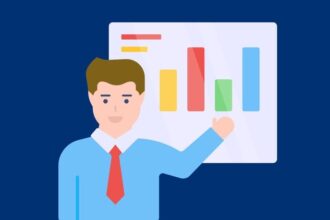What
You’ll Learn
You’ll Learn
- Analyze the structure of an accounting equation to accurately prepare for data transition between systems.
- Enter beginning balances from a prior accounting system into a new system using Excel
- ensuring alignment with established accounting principles.
- Apply Excel functions to record and organize one month of financial transactions systematically.
- Develop subledgers for accounts receivable
- accounts payable
- and inventory to manage detailed transaction records effectively.
- Synthesize transaction data to prepare comprehensive financial statements
- including a balance sheet and an income statement.
- Evaluate the accuracy and completeness of financial statements to ensure data integrity in the new accounting system.
- Demonstrate proficiency in using Excel for accounting workflows
- including managing balances
- transactions
- and subledgers.
Requirements
- Basic Accounting Knowledge – Participants should have a foundational understanding of accounting principles
- including the accounting equation
- financial statements
- and general ledger structure.
- Proficiency in Microsoft Excel – Students should have intermediate proficiency with Excel
- including familiarity with formulas
- data entry
- sorting
- filtering
- and basic spreadsheet formatting.
- Computer Literacy – A general ability to navigate software applications and handle digital files is necessary to complete course assignments and exercises efficiently.
- Access to Excel Software – Participants must have access to a functioning version of Microsoft Excel (2016 or later) on their computer for completing course activities and assignments.
Description
This comprehensive course is designed to guide participants through the process of transitioning accounting data from a prior system into a new system using Excel. With a focus on accuracy and structure, the course begins by teaching students how to enter beginning balances into the new system using an accounting equation format. This foundational step ensures that all financial data is correctly aligned and ready for further processing.
As the course progresses, participants will record one full month of transaction data, applying practical techniques to manage and input financial information efficiently. Alongside this, students will learn to integrate critical subledgers into the system, including accounts receivable, accounts payable, and inventory. These subledgers provide an organized framework for tracking detailed transactions, enabling participants to maintain clarity and precision throughout the process.
The course concludes with the preparation of essential financial statements, including a balance sheet and an income statement. These outputs will demonstrate the successful transition of data and provide insights into the performance of the new system. By the end of the course, participants will have gained valuable, hands-on experience with Excel-based accounting workflows, making it an ideal choice for accounting professionals looking to enhance their technical expertise in system transitions.
Who this course is for:
- Accounting Professionals – Accountants and bookkeepers looking to streamline their expertise in transferring financial data between systems while leveraging Excel for accuracy and efficiency.
- Small Business Owners – Entrepreneurs and small business managers who manage their own financial records and are transitioning to a new accounting system.
- Finance and Operations Staff – Team members responsible for financial data entry
- reconciliation
- or reporting who wish to deepen their understanding of Excel-based accounting processes.
- Students or Career Changers – Individuals pursuing a career in accounting or finance who want hands-on experience in practical system implementation and data handling.
- Consultants or System Implementers – Professionals assisting businesses in transitioning accounting systems and integrating financial workflows.







